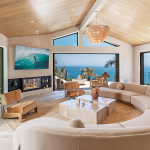Styles in interior design can vary greatly between you and your partner, making the prospect of merging homes both exciting and challenging. When you move into Nava Grove together, it’s crucial to find harmony between your differing aesthetics to create a cohesive and inviting space. In this blog post, you’ll discover innovative tips and strategies to blend your unique styles seamlessly, ensuring your shared home reflects both personalities while fostering a sense of unity.
Understanding Personal Styles
While begining on the journey of combining your home with your partner, a fundamental step is understanding each other’s personal styles. Recognizing what resonates with you individually will help create a seamless blend of aesthetics. This interaction not only enhances your living space but also fosters mutual respect and appreciation for each other’s tastes. Delving into your unique styles can set the foundation for effective collaboration in designing your shared environment.
Identifying Your Aesthetic
Your individual aesthetic reflects your personality and experiences, so take time to explore what styles resonate with you. Consider aspects like color preferences, furniture forms, and overall themes that spark joy or comfort. From minimalism to bohemian flair, identifying your core preferences creates clarity that is vital for merging styles with your partner.
Discussing Preferences with Your Partner
Your ability to openly discuss design preferences with your partner is crucial in harmonizing your shared space at Aurelle of Tampines. It’s an opportunity for both of you to articulate what you value in your home, creating a sense of collaboration rather than contention.
Understanding that each person comes with a unique perspective on design can enrich the conversation. Approach the discussion with an open mind, and encourage your partner to express their likes and dislikes. Consider creating a mood board together to visualize your ideas and preferences. This collaborative effort not only helps identify overlaps in your styles but also fosters a sense of partnership, ultimately leading to a harmonious living environment that reflects both of your tastes.
Finding Common Ground
You and your partner might have differing tastes in interior design, but that doesn’t mean you can’t create a cohesive space. Finding common ground is important for a harmonious living environment. Start by exploring each other’s styles and preferences, taking notes on what resonates with both of you. This collaborative approach not only fosters understanding but also opens the door to a beautifully blended home that reflects both personalities.
Areas of Agreement
Ground yourself in the areas where you and your partner naturally align. Whether it’s a preference for cozy textiles or a love for minimalist decor, identifying these touch points can help to facilitate a more enjoyable merging of styles. These commonalities can serve as a foundation upon which you’ll build your shared aesthetic.
Blending Styles Seamlessly
Finding the perfect balance between your distinct styles is key to creating a visually appealing space. Begin by selecting a unifying color palette that ties both styles together, then incorporate key elements from each of your designs to foster a sense of continuity. By strategically mixing and matching pieces, you can achieve a seamless flow that honors both of your tastes while cultivating a space that feels uniquely yours.
This process can also involve making compromises—consider a shared statement piece that captures both styles or using shared decor themes, such as nature or industrial elements. The goal is to create harmony, so resist the temptation to dominate with your style. Instead, aim for a synergistic approach where both of your aesthetic preferences coexist beautifully, allowing each piece to tell a part of your collective story.
Choosing a Color Palette
Some of the most effective ways to create harmony in your shared space is by selecting a cohesive color palette. Start by exploring both of your preferences and finding a unifying scheme that reflects your personalities. Consider incorporating neutral tones as a base and adding accent colors that resonate with both styles. This approach not only brings both of you into the design process but also creates a visual flow throughout the home.
Harmonizing Colors
One excellent strategy for harmonizing your colors is to choose a few shades that both you and your partner love and that complement each other. Look for inspiration in nature, artwork, or even your favorite fabrics. Create swatches or samples that you can place next to each other to see how they interact in different light conditions, ensuring a balanced and united aesthetic in your home.
Creating an Inviting Atmosphere
One way to create an inviting atmosphere in your shared space is through warm, welcoming colors that evoke comfort. Think about incorporating soft hues that promote relaxation, along with pops of vibrant shades that brighten your surroundings. Consider how texture plays a role alongside color, such as using plush fabrics or natural materials, to enhance the overall feeling of warmth and togetherness.
A thoughtfully chosen color palette not only reflects your styles but also sets the mood of your home. Choose warmer tones like soft yellows, muted oranges, or earthy greens to foster a cozy ambiance. Layer different textures, such as cozy rugs, fluffy cushions, and wooden accents, to add depth and interest. Together with your partner, you can visualize a space where every color and design element contributes to a harmonious and inviting atmosphere that feels uniquely yours.
Furniture and Décor Selection
Once again, the key to harmonizing your space lies in thoughtful furniture and décor selection. Focus on pieces that balance both your styles, ensuring that each item contributes to a cohesive look. Consider factors such as color, shape, and function to create a space where both your tastes shine, allowing your home to reflect both of your personalities.
Mixing and Matching Pieces
The secret to successfully mixing and matching furniture lies in maintaining a common theme. Select items that share similar textures or colors while embracing the unique elements from both of your styles. A blend of modern and vintage pieces can add character to your home, making it a true representation of your partnership.
Statement Furniture Ideas
One effective way to create a harmonious space is by incorporating statement furniture pieces that serve as focal points. Choose items that resonate with both of your styles, ensuring they stand out while complementing the overall environment.
Statement furniture can transform a room and spark conversation. Think about bold sofas, sculptural chairs, or unique coffee tables that embody both your aesthetics. For instance, a sleek, modern chair paired with an antique side table can beautifully illustrate the blend of styles. Selecting one or two high-impact pieces allows you to maintain cohesive decor while adding personality to your shared space.
Layout and Space Planning
Now that you’ve standardized your styles, it’s time to focus on layout and space planning. Consider how you’ll arrange your furniture and decor to create a cohesive living environment. This involves understanding both yours and your partner’s needs, ensuring that each area serves its purpose while promoting harmony. A thoughtfully designed layout can significantly enhance the comfort and functionality of your shared home, making it a welcoming space for both of you.
Functional Room Arrangements
Planning your room arrangements is important for optimal flow and functionality. Start by identifying the primary activities that will take place in each room, then arrange your furniture to accommodate these activities. For example, position seating areas in living rooms to encourage conversation and ensure that workspaces are conducive to productivity. This strategic approach not only enhances usability but also reflects a balance between your individual styles.
Zones for Individual Expression
Any successful design will allow you both to showcase your individual tastes within the shared space. Creating distinct zones in your home can provide each of you with a platform for personal expression. These zones can include personalized accents, specific decor styles, or even dedicated corners for hobbies or interests that highlight your unique identities.
Expression plays a critical role in making your new home feel like truly yours. By designating specific areas for personal touches, you can strike a balance between your tastes while celebrating your individuality. Whether it’s a gallery wall featuring your partner’s favorite art or a reading nook that showcases your book collection, these zones not only add character to your home but also remind you both of your unique identities amidst the harmony.
Incorporating Personal Touches
Keep individuality at the forefront by integrating personal touches that reflect both you and your partner’s identities. Personal decor not only adds warmth to your space but also becomes a conversation starter. Be it framed photos, unique collectibles, or cherished heirlooms, these elements help to cultivate an atmosphere that celebrates your shared journey while preserving individual backgrounds.
Displaying Memories
Memories play a significant role in your personal space. Create a gallery wall featuring photographs of your most cherished moments together, trips you’ve taken, or family milestones. This not only adds visual interest but also infuses your home with intimate memories that cultivate a sense of belonging and connection for you both.
Art and Accessories Strategy
The key to a successful art and accessories strategy lies in thoughtfully curating pieces that resonate with both of your aesthetics. Select a mix of artwork, such as paintings, prints, or sculptures that show your tastes while complementing each other’s styles. Incorporate decorative accessories like vases, cushions, or throws that can tie different design elements together, creating a cohesive look.
Plus, consider varying the scale and texture of your art and accessories to maintain visual interest. This can involve mixing large statement pieces with smaller, delicate items or contrasting rough textures with smooth surfaces. By blending different styles while being mindful of color palettes, you can achieve a harmonious vibe that feels distinctly yours, making your shared home a genuine reflection of both personalities.
Summing up
Ultimately, successfully harmonizing your home when moving in with your partner requires open communication, creativity, and a willingness to compromise. By blending your diverse interior styles and incorporating elements that reflect both of your personalities, you can create a cohesive and inviting space. Remember to embrace versatile decor, prioritize shared values, and engage in collaborative decision-making to foster a sense of belonging for both of you. Your home should be a reflection of your partnership, where every room tells a story of unity and love.
Lynn Martelli is an editor at Readability. She received her MFA in Creative Writing from Antioch University and has worked as an editor for over 10 years. Lynn has edited a wide variety of books, including fiction, non-fiction, memoirs, and more. In her free time, Lynn enjoys reading, writing, and spending time with her family and friends.















